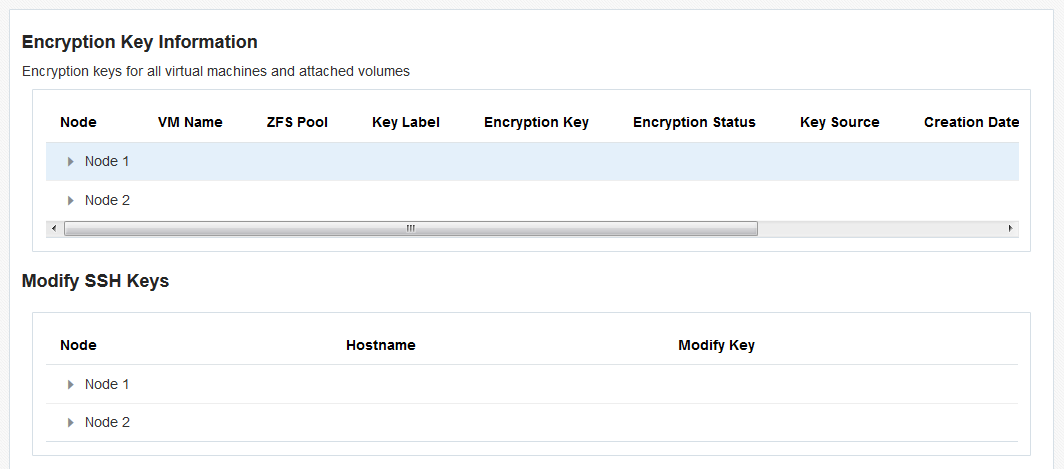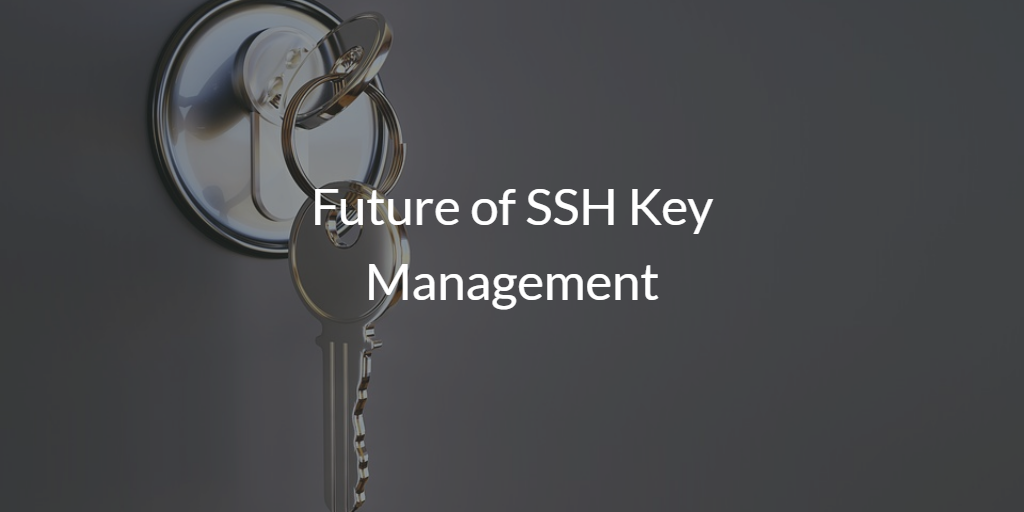Security of SSH and attacks against it The SSH protocol is believed to be secure against cryptographic attacks on the network, provided keys and credentials are properly managed. However, we do not recommend using diffie-hellman-group1-sha1 key exchange. It uses a 768 bit Diffie-Hellman group, which may be breakable by governments today. Private Key Compromise When you configure SSH for public key authentication, private keys then enable access to accounts. If a private key gets compromised, an attacker can authenticate into the account(s) where the private key is trusted. Here are some of the risks posed to SSH private keys.
Updated on March 15, 2021
- To generate SSH keys that are linked to a security key, use the ssh-keygen c. Ommand with the -t ecdsa-sk flag.
- In 2019, TrickBot added SSH key-grabbing capabilities for both PuTTY (SSH client for Microsoft) and OpenSSH. CryptoSink crypto-mining campaign targeting Elasticsearch systems, backdoors the target servers by adding the attacker’s SSH keys. Kaji malware targets IoT devices that have left their SSH port exposed on the internet. According to the.
- Universal SSH Key Manager ™ is the leading full lifecycle SSH Key management solution trusted by many of the world's largest enterprises. UKM manages and automates the lifecycle of millions of digital keys for risk mitigation and audit success.
If you spend enough time in an IT environment and with the rise of cloud infrastructure such as AWS, you will likely come across the term SSH keys. If you’ve already come across this IT term, then you might find yourself wondering, what are SSH keys? SSH (Secure Shell) keys are an access credential that is used in the SSH protocol and they are foundational to modern Infrastructure-as-a-Service platforms such as AWS, Google Cloud, and Azure.

Before this post delves into an explanation on what are SSH keys, let’s take a quick look at the SSH protocol.
Try it our way and see for yourself
Try JumpCloud's cloud-based directory for user, device and SSO management risk free.
The SSH Protocol
The first version of the SSH protocol was developed in the summer of 1995 by Tatu Ylonen. Tatu was a researcher at the University of Helsinki when a sniffing attack was discovered on the university network. A sniffing attack intercepts and logs the traffic that takes place on a network and can provide attackers with usernames and passwords which can then be used to gain access to critical IT assets. Thousands of credentials were impacted, including those belonging to community partnerships. This sniffing attack motivated Tatu to figure out how to make networks more secure, and this ultimately led to the creation of the SSH protocol (SSH.com).
Today, the SSH protocol is widely used to login remotely from one system into another, and its strong encryption makes it ideal to carry out tasks such as issuing remote commands and remotely managing network infrastructure and other vital system components. This is especially important in the era of cloud infrastructure and remote work. To use the SSH protocol, a couple pieces of software need to be installed. The remote systems need to have a piece of software called an SSH daemon, and the system used to issue commands and manage the remote servers needs to have a piece of software called the SSH client. These pieces of software are necessary to create a proper communication channel using the SSH protocol (DigitalOcean).
Essentially, SSH keys are an authentication method used to gain access to an encrypted connection between systems and then ultimately use that connection to manage the remote system.
What are SSH keys?
SSH keys come in many sizes, but a popular choice is an RSA 2048-bit encryption, which is comparable to a 617 digit long password. On Windows systems, it is possible to generate your own SSH key pair by downloading and using an SSH client like PuTTY. On Mac and Linux systems, it is possible to generate an SSH key pair using a terminal window. Watch the video below to find out how to generate your own RSA key pair on Mac and Linux.

SSH keys always come in pairs, and every pair is made up of a private key and a public key. Who or what possesses these keys determines the type of SSH key pair. If the private key and the public key remain with the user, this set of SSH keys is referred to as user keys. If the private and public keys are on a remote system, then this key pair is referred to as host keys. Another type of SSH key is a session key. When a large amount of data is being transmitted, session keys are used to encrypt this information.
Now let’s take a closer look at how a private key and public key work. To keep things simple, we will focus on how user keys work.
How User Keys Work


In a user key set, the private key remains on the system being used to access the remote system (i.e. the user’s desktop or laptop) and is used to decrypt information that is exchanged in the SSH protocol. Private keys should never be shared with anyone and should be secured on a system – i.e. the system is secured (full disk encryption, MFA), in the user’s possession, and the private key is secured via passphrase.
A public key is used to encrypt information, can be shared, and is used by the user and the remote server. On the server end, the public key is saved in a file that contains a list of authorized public keys. On the user’s side, the public SSH key is stored in an SSH key management software or in a file on their computer.
Using SSH Keys
First Steps
Before you can start using SSH keys, first you need to generate your own SSH key pair on the system you would like to use to access a remote system. This article and the video mentioned above are great resources that can guide you through on how to generate an SSH key pair. Once the key pair is generated, the next step is to put the public SSH key on the remote server. Depending on your setup, this can be done by entering a couple commands in the terminal window, using JumpCloud, or by manually placing the public SSH key on the remote server (DigitalOcean).
Behind the Scenes of SSH Key Authentication
After completing the steps mentioned above, use your terminal to enter in your ssh username and the IP address of the remote system in this format: ssh username@my_ip_address. This will initiate a connection to the remote system using the SSH protocol. The protocol and specified username will then tell the remote server which public key to use to authenticate you. Then the remote server will use that public key to encrypt a random challenge message that is sent back to the client. This challenge message is decrypted using the private key on your system.
Once the message is decrypted, it is combined with a previously arranged session ID and then sent back to the server. If the message matches with what the server sent out, the client is authenticated, and you will gain access to the remote server. This process proves to the server that you have the corresponding private key to the public key it has on file.
However, the security that this authentication process provides can be undermined when SSH keys are not properly managed.
Managing SSH Keys
It is imperative that proper SSH key management is in place because they often grant access to mission-critical digital assets. Also, companies tend to have a lot of SSH keys. In fact, Fortune 500 companies will often have several millions of these. Despite the difficulty in trying to manually manage millions of SSH keys, having an SSH key management system in place is continuously overlooked. SSH.com did some digging and discovered a company that had 3 million SSH keys “that granted access to live production servers. Of those, 90% were no longer used. Root access was granted by 10% of the keys ”. An effective SSH key management system in place would have gone a long way in reducing this concerning security risk.
IT has a couple options to gain control over SSH keys in their environment. One of these includes using an SSH key management tool. However this means having to manage one more platforms in addition to managing an SSO provider, a directory service, and maybe a system management solution. A new solution has emerged that is providing IT with a second option: JumpCloud Directory Platform.
Ssh Key Security
Cloud IAM offers SSH Key Management
This cloud-based identity and access management solution provides IT with one central place to manage SSH keys. Furthermore, IT can also centralize user authentication to Mac, Linux, and Windows devices, cloud servers, wired and WiFi networks, web-based and on-prem applications, and virtual and on-prem storage. With one central place to manage a user’s authentication to all of their resources, it becomes a simple matter of a few clicks to deprovision users from all of their resources, including SSH key access to remote systems.
Learn More about SSH Key Management with JumpCloud
Ssh Private Key Authentication
You are more than welcome to reach out to us if you would like more information on how the JumpCloud Directory Platform can simplify your SSH key management. If you’re ready to start testing our modern IAM platform, sign up for a free account. You’ll be able to explore all of our features, and your first 10 users and 10 devices are free. We’ll also be happy to help you 24×7 with our premium in-app chat support during the first 10 days.
